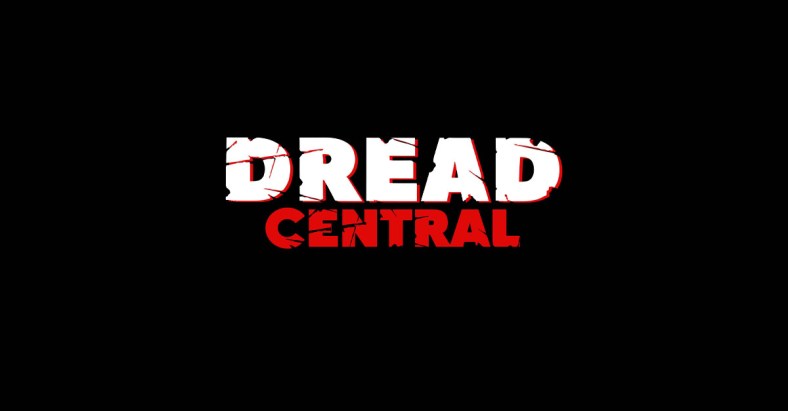Chucky: More than Mere CHILD’S PLAY

Until recently, the Child’s Play franchise has been a complete blind spot for me. For years I assumed it was just a silly killer doll story that didn’t carry much weight or interest for me. Seeing the original Child’s Play for the first time as an adult, I was surprised by how much I enjoyed the film; I found it to be a great deal of fun. Really, what’s not to like? It has lots of action and explosions, the kills are often imaginative and even spectacular, and the film’s central villain turned out to be quite worthy of his status as a horror icon. What I did not expect was for the film to contain a deadly serious thematic layer, whether intended by the creators or not, dealing with child abuse and domestic violence.
The killer doll scenario was nothing new, even in 1988, and is a difficult balance to strike. Make the doll too silly and the audience won’t be scared; make it too creepy and it becomes unbelievable as something the characters in the film, especially the children, would engage with. The original Child’s Play manages to create something that hits the sweet spot where the audience can sign on with a willing suspension of disbelief. The Good Guy Doll looks like something that would be very popular at the time—not far removed from a hybrid of the real-life toys of my childhood like My Buddy, Teddy Ruxpin, and the Cabbage Patch Kids. So, Chucky would be happily welcomed into any child’s home as something completely innocent.
Within this disguise is Charles Lee Ray, the Lakeshore Strangler, played in the film by Brad Dourif, who takes on this safe and desirable guise in order to escape death and take his revenge. This is not so far removed from Jerry Blake (Terry O’Quinn) in The Stepfather (1987) who, after murdering one family for not living up to his ideal, changes his appearance and puts on a pleasant face to be welcomed with joy into the next family. Or perhaps the frightening real-world example of John Wayne Gacy, who disguised himself as Pogo the Clown in order to lure people into a false sense of safety, is an appropriate comparison. The point is that abusers will often manipulate their victims into a sense of safety before showing their true selves. This frightening fact is at the heart of the Child’s Play franchise. It hinges on the idea that “he’s just a doll,” and incapable of hurting anyone.
Disguised as this innocuous object, Ray, known of course as Chucky, is welcomed into the home of single mother Karen Barclay (Catherine Hicks) and her son Andy (Alex Vincent) with great joy. There is an instant bond of trust between boy and doll. We soon learn that Chucky has been whispering to Andy about his true identity, and he manipulates Andy into keeping it a secret between them. Chucky begins by telling Andy that he was “sent down from heaven by daddy to play” with him. So, Andy has experienced a traumatic event with the death of his father that Chucky uses to his advantage. This is very much a form of aggression. Defined by Brian D. Johnson, Ph.D. and Laurie D. Berdahl, MD in their book Warning Signs: How to Protect Your Kinds from Becoming Victims or Perpetrators of Violence and Aggression, “Aggression is attempting to inflict or inflicting physical or psychological harm to someone by physical, verbal, or situational means, or dominating someone by using power. Examples are taunting, manipulating, threatening, stealing, cheating, humiliating, excluding, and inducing fear”. Chucky uses many of these to ensnare Andy into his web.
As Chucky begins to harm others, he threatens to kill Andy if he tells his secrets. When Andy does tell his mother and the police that “Chucky did it,” he is unsurprisingly met with disbelief and told not to make up stories. But, apparently, Chucky has already told Andy that no one will believe him anyway. Unfortunately, in the real world as well, children are often met with disbelief when they tell adults in authority about abuse. Because of this, professionals such as teachers, counselors, police officers, etc., are required by law to report accusations of child abuse so the matters can be thoroughly investigated. It is also all too common that abusers will threaten children or loved ones with further harm if they “tell on them.”
Chucky soon reveals his true nature to Karen and then to Detective Norris (Chris Sarandon). Andy, along with the help of these believing adults, is now empowered to face his abuser. When Chucky makes one last attempt at feigning innocence and says, “Andy, please no. We’re friends till the end,” there is great power in Andy’s response of, “this is the end, friend,” before dropping a match into the gas-filled fireplace where Chucky is trapped, and thus fighting back against his tormentor.
By the end of the film, it is clear that the psychological scars inflicted by Chucky will continue. This is, sadly, very much a reality for victims of abuse as well. The sequels deal with the lasting impact of trauma on children and lasting into adulthood. Child’s Play 2 (1990) follows Andy into foster care and another situation where he is faced with the disbelief of adults. It takes the elements of the child being blamed for the acts of the abuser even further than the first film. By Child’s Play 3 (1991), Andy takes on a new role: that of a protector. Chucky attempts to ensnare a new child, Tyler, but Andy puts himself in harm’s way rather than see another child be hurt. He is very much like an older sibling who will take the brunt of danger rather than see his or her younger brother or sister come to harm.
Though the first three films contain Chucky’s brand of gallows humor, the next two sequels, Bride of Chucky (1998) and Seed of Chucky (2004), take a decidedly sharp turn into horror-comedy. The abuse subtext is still moderately present but generally put on the back burner for other interesting subtexts such as LGBTQ identity among others. The major element of abuse that the two films deal with is the toxic codependent domestic relationship between Chucky and Tiffany (Jennifer Tilly), as well as the treatment of their offspring Glen/Glenda. Still, there are many fans of these two installments, and they give the Chucky franchise a completely unique flavor that is not really found in other horror franchises.
The last two installments in the original film franchise take a sharp turn in the opposite direction and are actually quite dark. We see little of the humor of the previous two films or even as much as the original three. In Curse of Chucky (2013), we once again find some of the familiar beats from the first and second film of a child not being believed when saying the words, “Chucky did it.” Cult of Chucky (2017) is darker still, with Andy returning as a grown man completely (and understandably) incapable of escaping his trauma. He has become something of a sadist, holding on to the decapitated head of the original Chucky, still alive, and torturing it with a nail gun and blowtorch. He does, however, still attempt to fulfill his role as protector of innocents by voluntarily putting himself in harm’s way to stop Chucky from continuing his deadly spree.
With the recent news that Don Mancini will be doing a Chucky television series for the SyFy Channel, it will be interesting to see where he takes the mythos from here. Cult of Chucky ends on something of a cliffhanger with the fates of several characters left undecided. It remains to be seen whether the themes introduced in 1988 and carried into the most recent films will continue, but it seems unlikely that something so ingrained in the DNA of the series will simply disappear from it in this next phase.
The serious subtext present in these films does not in any way diminish the fact that these are fun movies. The series can very much be enjoyed as an exciting, often scary, and (perhaps more often) funny romp. However, the subtext does increase the seriousness of Chucky from something that could be potentially silly to a real threat. It ups the ante of danger to something both believable and imminent within the world of the films. It also lifts the series as a whole from passing entertainments to something that has lasted over thirty years and continues to be a deep well of storytelling possibilities. They are films that have serious things to say about some frightening realities in the world and the challenges and triumphs of facing them.
Categorized:Editorials News





